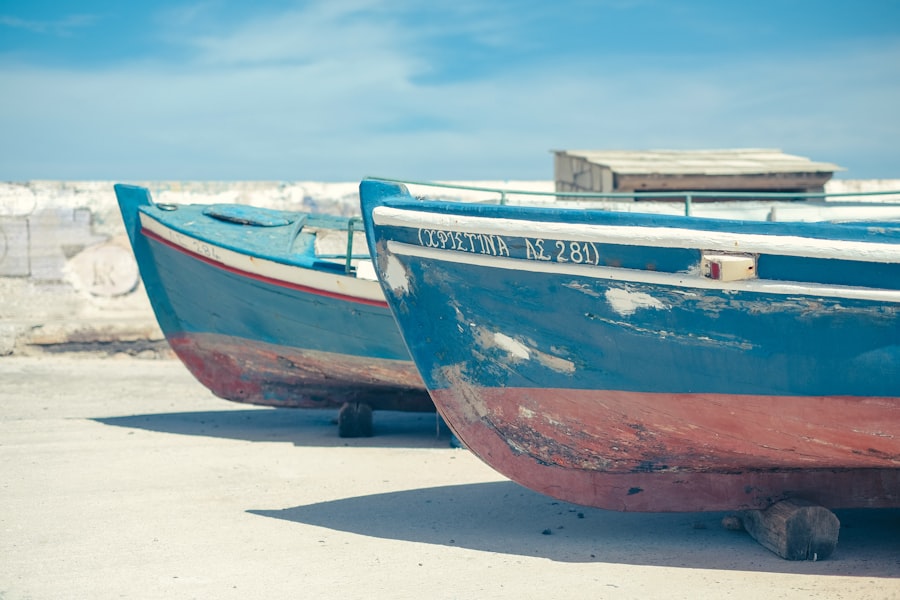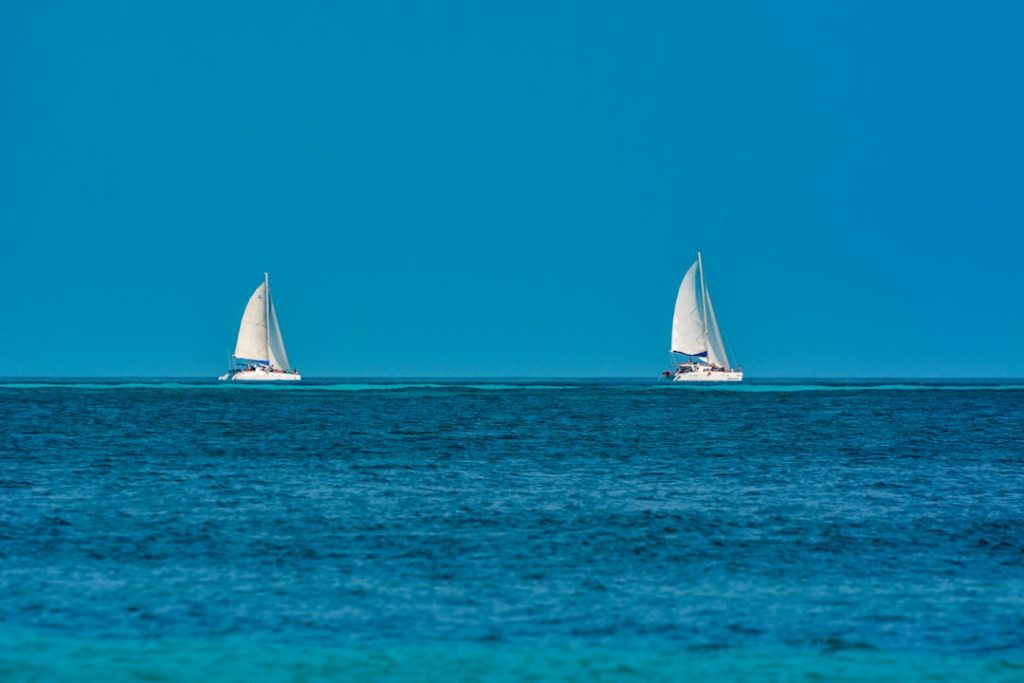Wave boats, often referred to as jet boats or personal watercraft, are specialized vessels designed to navigate and ride on the surface of waves. Unlike traditional boats that are built primarily for cruising or fishing, wave boats are engineered for performance and agility in dynamic water conditions. They typically feature a lightweight hull, powerful engines, and a design that allows for quick maneuverability, making them ideal for thrilling rides over waves.
The propulsion system in wave boats often utilizes jet drives, which draw water from beneath the boat and expel it at high speed, providing both thrust and steering control. The mechanics of wave boats are fascinating. The hull design is crucial; it is often V-shaped or modified to cut through waves efficiently while maintaining stability.
This design minimizes drag and allows the boat to rise over waves rather than plowing through them, which can lead to a smoother ride. Additionally, many wave boats come equipped with adjustable trim systems that allow riders to alter the angle of the boat relative to the water surface, enhancing performance in various wave conditions. The combination of these features enables wave boats to perform tricks, jumps, and sharp turns, making them popular among thrill-seekers and water sports enthusiasts.
Key Takeaways
- Wave boats are specialized watercraft designed to ride and maneuver on ocean waves using unique hull shapes and propulsion systems.
- Selecting the right wave boat involves considering factors like size, skill level, intended use, and local water conditions.
- Prioritizing safety includes wearing appropriate gear, understanding weather and wave patterns, and following boating regulations.
- Beginners should focus on mastering basic riding techniques, balance, and wave reading before attempting advanced maneuvers.
- Regular maintenance and connecting with the wave boat community enhance both the longevity of the boat and the overall riding experience.
Choosing the Right Wave Boat: Factors to Consider When Selecting a Wave Boat
Selecting the right wave boat involves several critical factors that can significantly impact your riding experience. One of the primary considerations is the size and weight of the boat. Smaller wave boats are generally more agile and easier to handle, making them suitable for beginners or those who prefer a more playful riding style.
Conversely, larger models may offer more stability and power, which can be advantageous for experienced riders looking to tackle bigger waves or engage in more advanced maneuvers. Another essential factor is the engine type and horsepower. Wave boats come with varying engine configurations, from two-stroke engines known for their high power-to-weight ratio to four-stroke engines that provide better fuel efficiency and lower emissions.
Riders should consider their intended use—whether for casual riding, racing, or performing tricks—when evaluating engine options. Additionally, features such as storage capacity, seating arrangements, and safety equipment should also be taken into account. A boat with ample storage can accommodate gear for longer outings, while comfortable seating can enhance the overall experience for both the rider and any passengers.
Safety First: Tips for Safe Wave Boat Riding

Safety is paramount when it comes to wave boat riding, as the thrill of navigating through waves can also present significant risks. One of the most critical safety measures is wearing a personal flotation device (PFD) at all times. A well-fitted life jacket not only provides buoyancy in case of an accident but also ensures that riders are visible in the water.
Additionally, it is advisable to wear a wetsuit or drysuit depending on water temperatures, as these can provide thermal protection in colder conditions. Before heading out on the water, riders should conduct a thorough pre-ride inspection of their wave boat. This includes checking fuel levels, inspecting the engine and jet drive for any signs of wear or damage, and ensuring that all safety equipment is onboard and functional.
It is also essential to familiarize oneself with local boating regulations and weather conditions. Understanding how to read wave patterns and recognizing potential hazards such as rocks or other vessels can significantly reduce the risk of accidents. Lastly, maintaining a safe distance from other boats and swimmers is crucial to avoid collisions.
Getting Started: Wave Boat Riding Basics for Beginners
| Metric | Description | Recommended for Beginners | Notes |
|---|---|---|---|
| Boat Type | Inflatable or Hard Shell | Inflatable | Inflatable boats are lighter and easier to handle for beginners |
| Wave Height | Optimal wave height for learning | 1-3 feet | Smaller waves reduce risk and help build confidence |
| Safety Gear | Essential equipment | Life jacket, helmet | Always wear safety gear to prevent injuries |
| Session Duration | Recommended time on water per session | 30-60 minutes | Short sessions help avoid fatigue and maintain focus |
| Instructor to Student Ratio | Ideal supervision level | 1:4 | Ensures personalized attention and safety |
| Basic Skills to Learn | Key beginner techniques | Paddling, balance, wave reading | Mastering these skills is crucial before advancing |
| Water Temperature | Comfortable temperature range | 65-75°F (18-24°C) | Wetsuits may be needed outside this range |
For those new to wave boat riding, starting with the basics is essential for building confidence and skill on the water. The first step is understanding how to operate the controls effectively. Most wave boats feature handlebars similar to those found on motorcycles, which control steering and throttle.
Beginners should practice starting and stopping in calm waters before venturing into more challenging conditions. Learning how to balance the boat while accelerating or decelerating is also crucial; shifting weight appropriately can help maintain stability. Once comfortable with basic controls, beginners should focus on mastering turning techniques.
Sharp turns can be exhilarating but require practice to execute safely. Riders should learn to lean into turns while maintaining a firm grip on the handlebars to prevent losing control. Additionally, understanding how to navigate through waves is vital; approaching waves at an angle rather than head-on can help prevent the boat from nosediving or becoming airborne unexpectedly.
As confidence grows, beginners can gradually explore more challenging environments and experiment with different riding styles.
Advanced Techniques: Mastering Wave Boat Riding Skills
As riders become more proficient in wave boat operation, they may wish to explore advanced techniques that enhance their riding experience. One such technique is learning how to perform jumps and tricks over waves. This requires a combination of speed, timing, and body positioning.
Riders should approach a wave with sufficient speed and then shift their weight backward just before hitting the crest to launch into the air. Practicing this maneuver in controlled environments can help riders develop the necessary skills without risking injury. Another advanced skill involves mastering carving turns and slalom riding.
Carving turns allows riders to maintain speed while navigating through tight spaces or around obstacles. This technique involves leaning into the turn while applying throttle smoothly to maintain momentum. Slalom riding, on the other hand, requires quick directional changes while maintaining balance and control over the boat’s speed.
Both techniques demand practice and an understanding of how weight distribution affects handling during high-speed maneuvers.
Wave Boat Maintenance: Keeping Your Wave Boat in Top Condition

Proper maintenance is essential for ensuring that a wave boat remains in optimal condition throughout its lifespan. Regular inspections should include checking the engine oil levels, coolant levels, and fuel quality. It is advisable to follow the manufacturer’s recommendations for oil changes and other routine maintenance tasks to prevent engine wear and ensure reliable performance.
Additionally, cleaning the jet drive system regularly helps prevent debris buildup that could impair performance. The hull of the wave boat also requires attention; regular cleaning with appropriate marine-grade products can prevent corrosion and maintain its appearance. Inspecting the hull for scratches or damage after each outing is crucial, as even minor abrasions can lead to more significant issues if left unaddressed.
Furthermore, winterizing the boat before storage is vital in colder climates; this process typically involves draining water from the engine and fuel system, adding antifreeze, and covering the boat to protect it from environmental elements.
Wave Boat Destinations: The Best Places to Ride Waves
Choosing the right location for wave boat riding can significantly enhance the experience. Some of the best destinations around the world offer stunning scenery along with ideal conditions for wave boating. For instance, Lake Havasu in Arizona is renowned for its expansive waters and vibrant boating community, making it a popular spot for both novice and experienced riders alike.
The lake’s warm climate allows for year-round riding opportunities. Another exceptional destination is Maui’s north shore in Hawaii, famous for its powerful surf breaks and breathtaking landscapes. Here, riders can experience some of the most exhilarating conditions while surrounded by stunning natural beauty.
The combination of warm waters and consistent waves makes it an ideal location for those looking to push their skills further or simply enjoy a day on the water. Other notable locations include Florida’s Intracoastal Waterway and California’s coastline, both offering diverse environments suitable for various riding styles.
Wave Boat Community: Connecting with Other Wave Boat Enthusiasts
Engaging with fellow wave boat enthusiasts can enrich your riding experience significantly. Many communities exist both online and offline where riders share tips, experiences, and organize events or meetups. Social media platforms often host groups dedicated to wave boating where members post photos, videos, and advice on everything from maintenance tips to riding techniques.
Local clubs or organizations frequently hold events such as races or group rides that provide opportunities for riders to connect in person. These gatherings foster camaraderie among enthusiasts who share a passion for wave boating while allowing newcomers to learn from seasoned riders. Participating in these communities not only enhances skills but also creates lasting friendships built around a shared love for adventure on the water.


